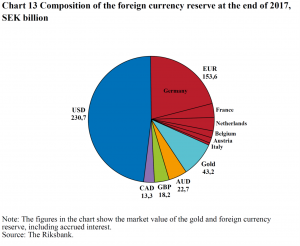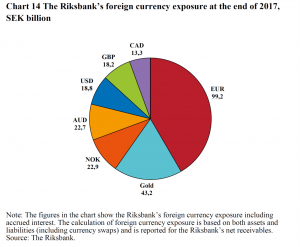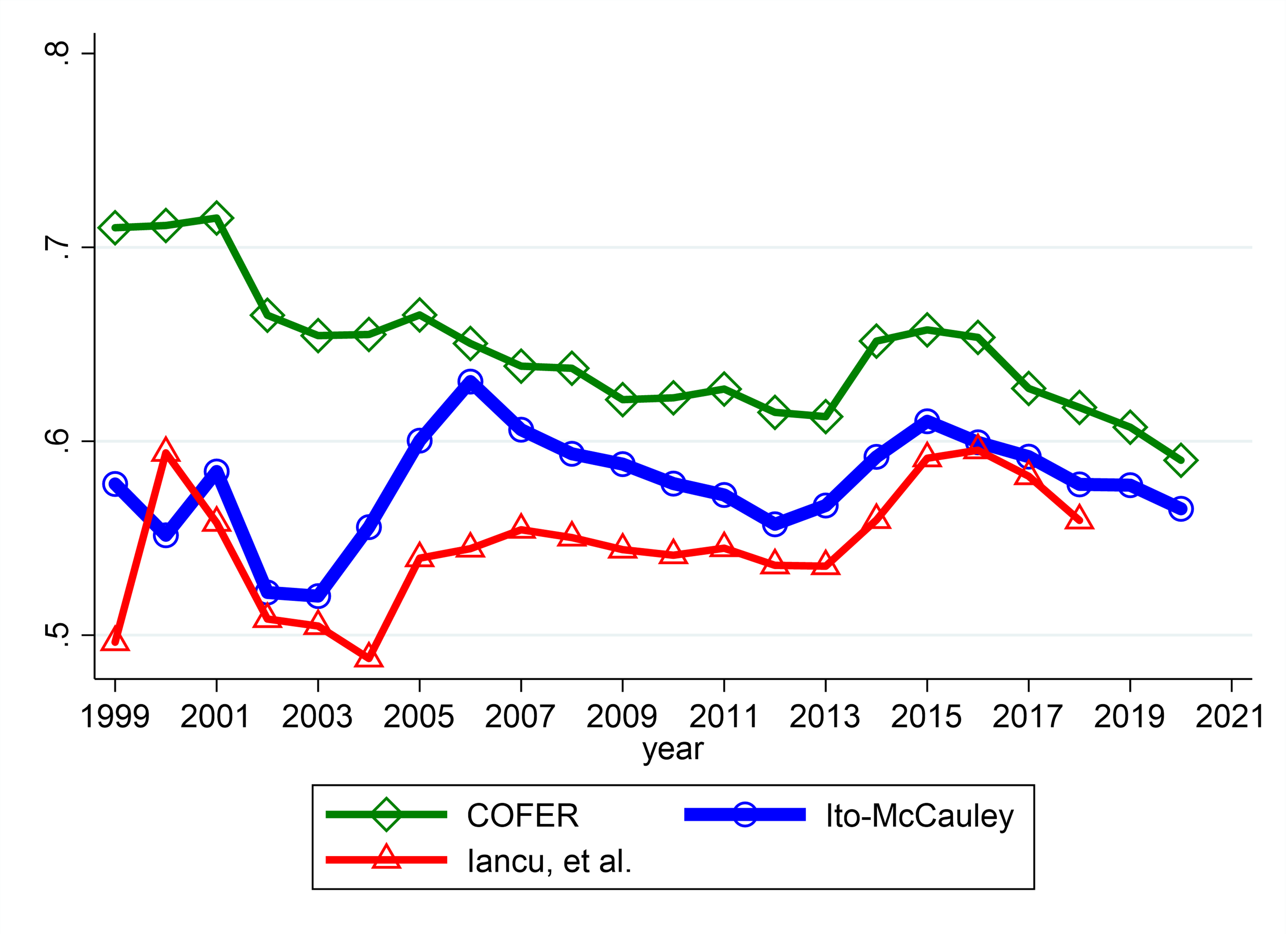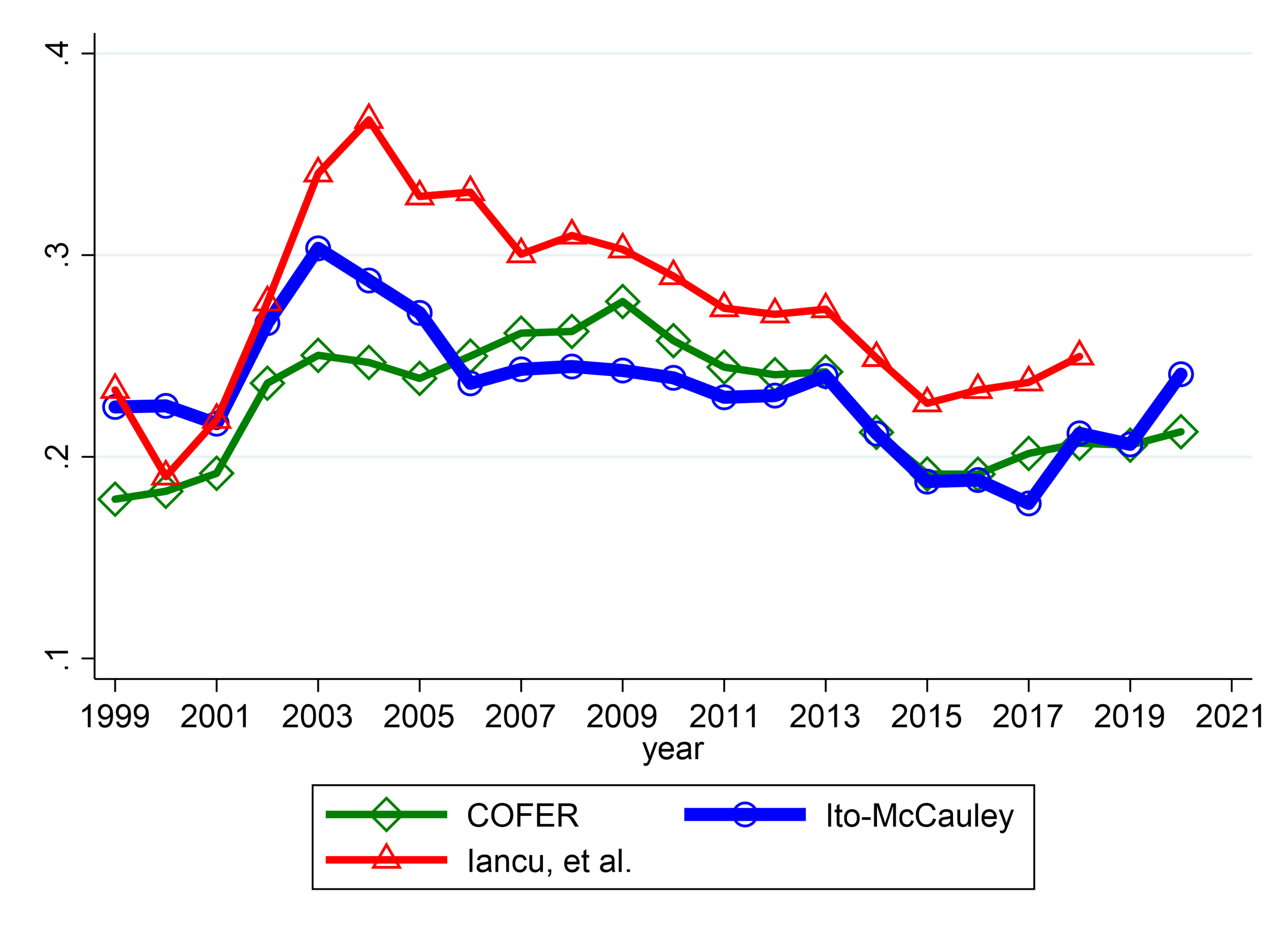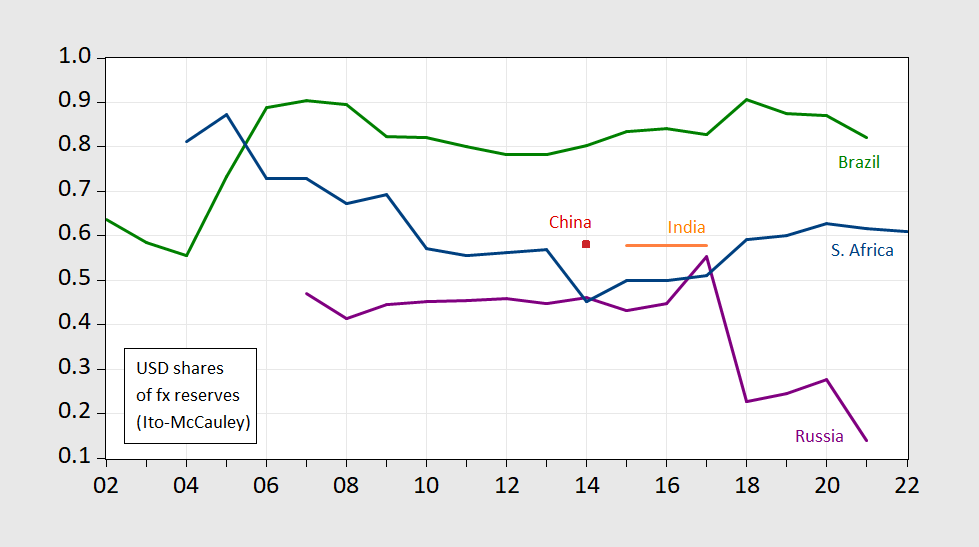The Ito-McCauley Database On Individual Central Bank Reserve Holdings

Image Source: Pixabay
Hiro Ito and Robert McCauley have compiled a dataset (first discussed in this 2019 working paper) of the currency composition of international reserves over the 1999-2021 period. This dataset was used in Ito and McCauley (2020), Chinn, Ito and McCauley (2022), and Chinn, Ito and Frankel (2024).
The IMF’s COFER only presents aggregate currency shares. Other datasets of individual central bank reserves are less comprehensive, and/or report gross rather than net values (Iancu, et al. 2020).
For an individual central bank, the differences can be striking. Figure 13 for Sweden’s Riksbank is based on Iancu et al. (2020) data, Figure 14 is based on Ito and McCauley (2022) data.
In the aggregate, there are differences between the relevant data sets. The first figure is for USD shares, the second is for EUR shares.
Figure 1: USD shares of international reserves from IMF COFER (green), Iancu et al. (red), and Ito and McCauley (blue).
Figure 2: EUR shares of international reserves from IMF COFER (green), Iancu et al. (red), and Ito and McCauley (blue).
The differences are attributable to coverage (COFER covers in principle all reporting IMF members, while Iancu et al. and Ito-McCauley cover different sets of countries), and treatment of reserves.
We have used this data set to investigate whether de-dollarization is occurring in the BRICS.
Figure 3: Share of foreign exchange holdings in USD, by central bank. Source: Ito-McCauley database,..
Hiro Ito has also done an early check on nontraditional reserves through 2022:
Figure 4: Geometric average of reserve holdings (expressed in USD) for reporting central banks. Very incomplete data for 2022. Source: Ito calculations on unpublished version of Ito-McCauley dataset.
The data set website is here (available in either Excel or Stata formats). Unfortunately, the coverage in this publicly available data set is smaller (63 countries) than that used in Chinn-Ito-McCauley (73 countries) or Chinn-Ito-Frankel (2024), due to confidentiality restrictions imposed by several Latin American central banks.
Recently, Laser, Milhailov and Weidner (2024) have circulated a database on individual central bank holdings for eight currencies. I suspect coverage for the reserve currencies such as CAD, AUD and CNY is going to be fairly spotty (and spotty for all currencies in 2022 and particularly 2023), given what information we have in the Ito-McCauley dataset.
More By This Author:
Employment Slowdown In Context
A Puzzle: Private NFP And The Preliminary Benchmark Vs. Current Official [Updated]
Business Cycle Indicators As Of September’s Start

